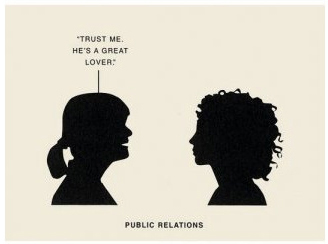‘’I do no know why but women want any of the things men have when one of things that women have is men.’’ Coco Channel
 Women are often overlooked in how they add to society. Historically the greatest thinkers of middle ages have had very interesting views on women. The views on procreation, for example Aristotle was considering an active, ensouling masculine element bringing life to an passive female element. Confucianism is introducing men to begin their day with thanksgiving and appreciation to Almighty Gods for the fact that they have not created them a woman. In Christian traditions a woman was considered as a ‘’vessel of sin’’: namely a woman (Eva) according to Bible was guilty of the exile of the first people from the Heaven.
Women are often overlooked in how they add to society. Historically the greatest thinkers of middle ages have had very interesting views on women. The views on procreation, for example Aristotle was considering an active, ensouling masculine element bringing life to an passive female element. Confucianism is introducing men to begin their day with thanksgiving and appreciation to Almighty Gods for the fact that they have not created them a woman. In Christian traditions a woman was considered as a ‘’vessel of sin’’: namely a woman (Eva) according to Bible was guilty of the exile of the first people from the Heaven.The main virtues of women have been considered obedience, humility and modesty for a long time. The role of women in a “man’s world’’ was to bear children, parenting and housekeeping. In this attitude women didn’t have any legitimate (and approved by the society) ways to make a living and were economically dependent on men, which only reinforced gender inequality.
Nowadays women not just have reached the same heights as men, but also dominating them in some spheres. And here comes the most interesting thing Women imitating men, and following the rules of a ‘’man’s world’’, have reached the ‘’men heights’’. But it appeared that women are not men! Historical inequality between men and women is based on the fact, that even a human naked eye can indicate- women and men are different.
Below is a little excerpt from Tom Peter’s “Re-imagine!’’ book, which is focusing on how the business climate has changed, exploring radical ways of overcoming outdated, traditional company values and psychological differences between men and women.
Men
|
Women
|
Get away from authority and family
| Connect |
| Self-oriented | Other-oriented |
| Rights-oriented | Responsibility-oriented |
| Stay detached | Get personal |
| Proud of personal power | Proud of joint achievements |
| See general | Notice details |
| Low sensitivity to odors | High sensitivity to odors |
| Screen out quiet sounds, are comfort with load | Hear quiet sounds, are uncomfortable with loud |
| Poor developed sense of touch | Well developed sense of touch |
| At three-day age slowly establish eye contact | At three-day age twice intense establish eye contact than boys |
And yes, women are different but it only could come to man’s mind that if different- they are worse.
How does it apply to marketing?
Very simply. While the pursuit of women to reach to equality was only getting stronger, they were aspiring to be look like men in everything. Women were earning money, they were engaging in politics, learning to deal with technology and electronics, consuming men products and consuming it in a ‘’male way’’. Accordingly, the marketing communication could be homogeneous, and the products sold to both men and women could have equal success.
Men
|
Women
|
| Talk about their ‘’favorites’’ | Love to talk |
| Think silently | Think out loud |
| Direct | Prevaricative |
| Want to hear facts (only) | Want interesting stories |
| Go to store for a particular thing | Purchase on the way |
What does it mean in terms of marketing?
When men are purchasing a product, they just purchase it, nothing more. (Men see the general things. Remember?). Service from the point of view of men is unnecessary and is detail. For women instead, it’s important the service and ‘’packaging’’. Sometimes service is more important than the product. The personality of the merchant, additional services, comfort at the place of the purchase are contributing women in shopping, rather than men. Women are ready to pay more for additional service!!
It is very important also to consider the point of ‘’purchasing on the way’’! An example is a bank. To go to outside specially for paying the bill is a male thing! To pay the bill after shopping at the mini-office bank located at the same shop is feminine! Do all companies catch this fact up? Apparently, no!
[1] http://www.4p.ru/main/theory/133443/
[2] http://www.tompeters.com/reimagine/
[3] http://www.trendsight.com




















